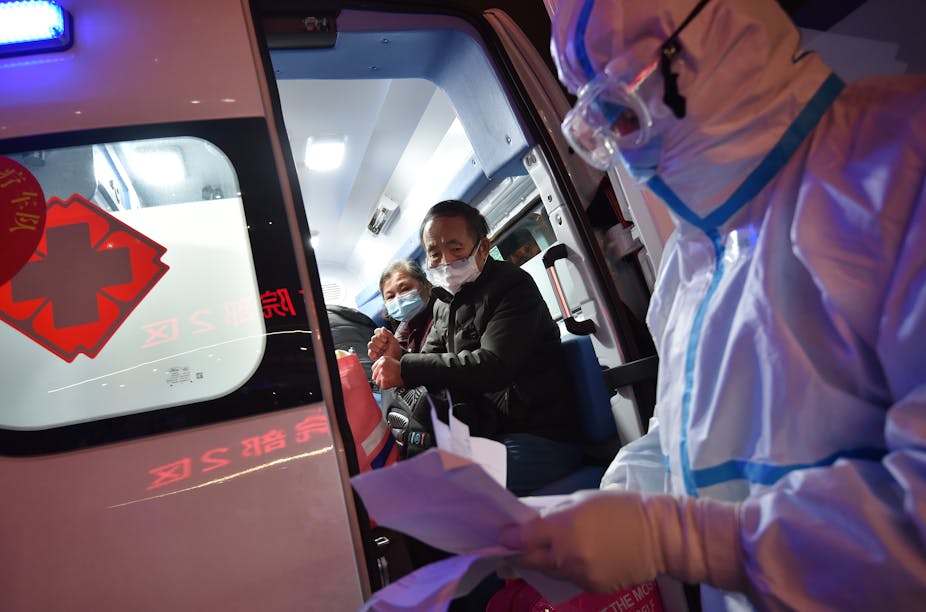If the World Health Organization (WHO) wants to maintain its legitimacy on the world stage, it must now answer some tough questions about the extent it has kowtowed to China during the coronavirus pandemic.
It now has a chance to do so, after its members agreed to adopt a resolution for an inquiry into the global handling of the pandemic at a virtual meeting of its annual World Health Assembly on May 19. But there are still many other questions that need to be answered before it can restore its credibility.
We have studied China’s engagement with global health institutions such as the WHO, China’s compliance with global public health norms and how far it succeeds in creating and promoting its own norms around the world. Amid the global crisis caused by the coronavirus pandemic, which has infected nearly five million people and killed more than 320,000 in just a few short months, understanding the relationship between China, where the outbreak began, and the WHO is crucial to the future of global public health.
Read more: The world agreed to a coronavirus inquiry. Just when and how, though, are still in dispute
Uncritical of China
The WHO’s leadership has come under unprecedented scrutiny during the pandemic for giving the impression that it has been swayed by, and beholden to, China. In late January, in the early days of the outbreak, the WHO’s director general, Tedros Adhanom Ghebreyesus, heaped unqualified praise on China’s COVID-19 policy measures and the leadership of Xi Jinping. He commended the “seriousness” with which China was taking the outbreak, “the commitment from top leadership, and the transparency they have demonstrated”.
But non-transparency and censorship are pervasive in all levels of China’s system of government. Tedros had been warned by his aides of the potential repercussions of his effusive praise of China, but reportedly ignored them. It appears the WHO also took the initial information and data about the epidemic transmitted to it by China at face value.

In late March, Japan’s deputy prime minister, Taro Aso, quipped that the WHO should be renamed the “Chinese Health Organization”. The US president, Donald Trump, went further – criticising the WHO of being too “China-centric” in handling the pandemic and of an “alarming lack of independence” from China.
Read more: China’s coronavirus cover-up: how censorship and propaganda obstructed the truth
Investigation battlefield
The WHO now needs to restore its global credibility. The call for an independent, comprehensive review of the COVID-19 pandemic quickly became a battlefield between China and Western countries, especially Australia and the US. What was eventually adopted on May 19 without objection was a compromise resolution, submitted by the European Union and endorsed by more than 100 other countries.
The resolution does not refer to China, but asks the WHO to work with the World Organisation for Animal Health and the Food and Agriculture Organization, now led by the Chinese scientist Qu Dongyu, to: “Identify the zoonotic source of the virus and the route of introduction to the human population, including the possible role of intermediate hosts.” The resolution also looks forward, pointing to potential intellectual property right issues surrounding a new vaccine.
Speaking at the World Health Assembly the day before the resolution was adopted, Xi framed China as a staunch supporter of multilateral global health governance and committed US$2 billion ($1.6 billion) to the international campaign to combat COVID-19. He promised that Chinese vaccines would be “global public goods”, directly confronting fears of a rise in vaccine nationalism in the West. But China’s moves were principally aimed at improving its tarnished reputation.
Tasks for the inquiry
With the resolution adopted, the battle will now centre on who should lead the inquiry. If this inquiry is to be genuinely independent, it must address unanswered questions about who was China’s “patient zero” and when and how they were infected.
A real test would be whether the WHO-led delegation could meet, independently of Chinese authorities, some of the key figures involved in managing the initial stages of the country’s COVID-19 outbreak. It would be enlightening for them to hear at firsthand from frontline doctors in Wuhan hospitals who treated the first batch of COVID-19 patients, such as the doctor Ai Fen. Others they may want to meet are the Wuhan Institute of Virology’s Shi Zhengli, known as China’s “bat woman” and the heads of the genomics laboratories which were reportedly asked to destroy the samples after testing.
Zhang Yongzhen of Fudan University in Shanghai would also be worth speaking to. Zhang has rarely appeared in Chinese official narratives, but his team concluded that the virus was of the coronavirus family, and their results were published in the journal Nature in early February. It later emerged that his laboratory had been ordered to close in early January, with no reason given.
Besides the inquiry into the origins of the virus, another key question is whether the WHO delayed declaring an international emergency after coming under pressure from China, a claim reported by Der Spiegel and Newsweek. According to Newsweek, citing a CIA report, the delay allowed China to hoard essential medical supplies and personal protective equipment from abroad.
Like other UN organisations, the WHO cannot enforce its decisions and policies without the support of its member states. Its success relies on whether it can persuade politicians and officials to comply with its decisions. Maintaining legitimacy is crucial if the WHO is to effectively tackle the future health crises that affect all of humanity.

